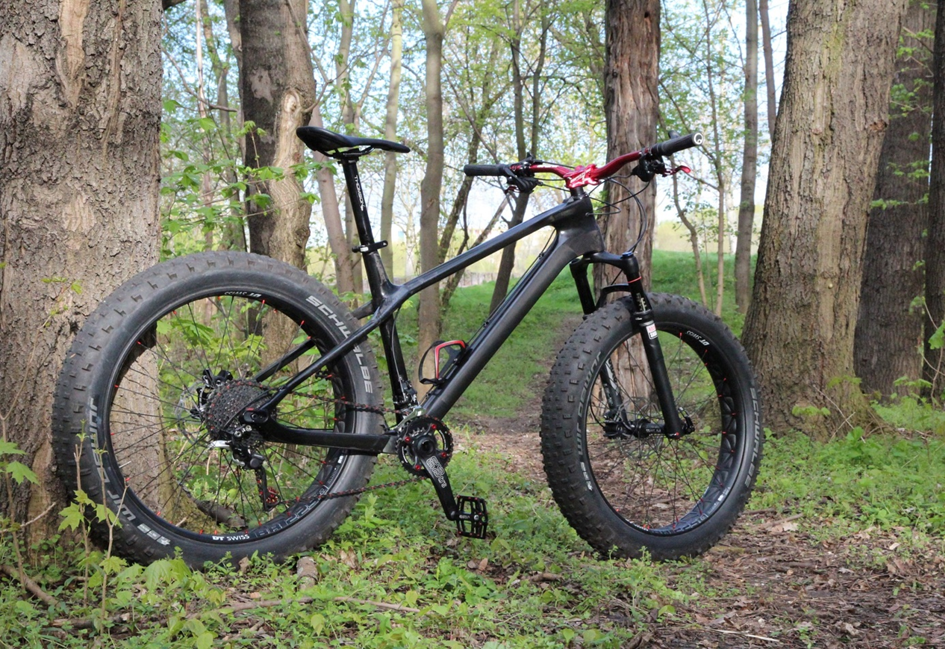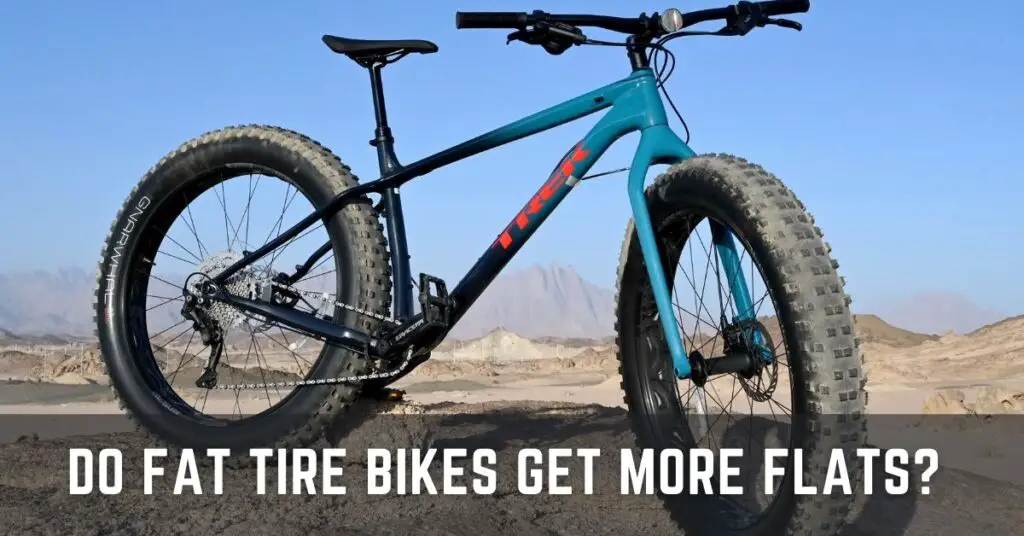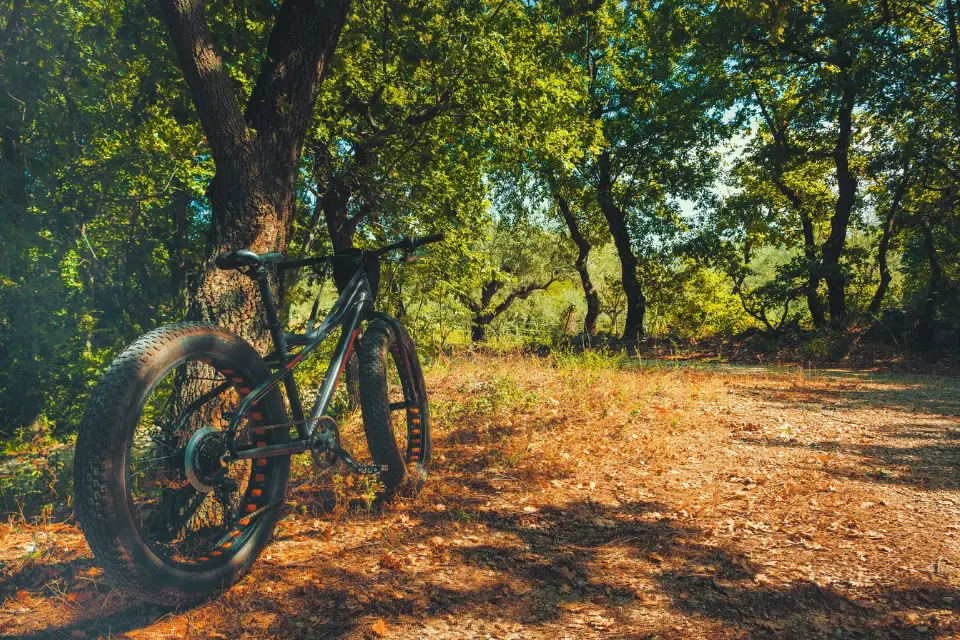Are fat tire bikes easier to ride? This question often arises when considering the unique design and capabilities of these bikes. While the wide, knobby tires might seem intimidating at first, they offer a surprising level of stability and traction, especially on challenging terrain. Fat tire bikes have gained popularity for their versatility and off-road prowess, but their performance on paved surfaces and the effort required to ride them can be debated.
This exploration delves into the intricacies of fat tire bike design, riding experience, and the physical demands they present.
Fat tire bikes, with their signature wide tires, have become synonymous with off-road adventures. These bikes are often associated with navigating challenging terrains like sand, snow, and mud, where their extra grip and stability excel. However, their unique design also raises questions about their handling on paved surfaces, pedaling efficiency, and overall ride comfort. Understanding the nuances of fat tire bikes requires a deeper dive into their design, performance characteristics, and the riding experience they offer.
Fat Tire Bike Design and Features

Fat tire bikes are known for their distinctive wide tires, which offer a range of benefits, including increased stability, traction, and comfort. However, these features also come with trade-offs, particularly in terms of rolling resistance and weight. Let’s delve deeper into the design and features of fat tire bikes to understand how they work and what makes them unique.
Wide Tires and Their Impact
Fat tire bikes are characterized by their wide tires, typically measuring 3.8 inches or more in width. These tires provide several advantages:
- Enhanced Stability: The large contact patch of the wide tires provides increased stability, especially on loose surfaces like sand, snow, or mud. This wider footprint distributes the rider’s weight more evenly, making it harder for the bike to tip over.
- Improved Traction: Fat tires offer superior traction compared to traditional mountain bike tires, especially on soft or slippery terrain. The increased surface area allows the tires to grip the ground more effectively, providing better control and preventing wheel spin.
- Increased Comfort: The large volume of air in fat tires acts as a natural suspension system, absorbing bumps and vibrations more effectively than narrower tires. This provides a smoother and more comfortable ride, especially on rough or uneven surfaces.
Rolling Resistance and Efficiency
While the wide tires of fat tire bikes offer numerous advantages, they also contribute to increased rolling resistance. This means that the bike requires more effort to move forward compared to bikes with narrower tires.
- Increased Surface Area: The large surface area of fat tires creates more friction with the ground, resulting in higher rolling resistance. This can be especially noticeable on paved surfaces or hardpack trails.
- Tire Pressure: Fat tire bikes typically run lower tire pressures than traditional mountain bikes. While this improves comfort and traction, it also increases rolling resistance.
- Tire Construction: The construction of fat tire tires, often featuring a heavier carcass and thicker tread, can also contribute to increased rolling resistance.
Suspension Systems
Fat tire bikes can be equipped with various suspension systems, similar to traditional mountain bikes. However, some differences exist:
- Front Suspension: Most fat tire bikes feature front suspension forks, often with more travel than traditional mountain bikes to handle rough terrain. This helps absorb shocks and bumps, providing a smoother ride.
- Rear Suspension: Some fat tire bikes feature rear suspension systems, while others are hardtail, meaning they have only front suspension. Rear suspension can provide additional comfort and control, especially on technical trails.
- Suspension Design: Fat tire bikes often use suspension designs that are specifically optimized for their wider tires and increased weight. These designs may include larger stanchions, thicker shafts, and stronger springs to handle the additional load.
Frame Geometry
The frame geometry of a fat tire bike is designed to accommodate the wider tires and provide a comfortable and stable ride.
- Longer Wheelbase: Fat tire bikes typically have a longer wheelbase than traditional mountain bikes, which increases stability and helps prevent the bike from feeling twitchy or unstable.
- Slack Head Angle: A slacker head angle (the angle between the steering axis and the ground) provides a more relaxed and stable ride, particularly on downhill sections.
- Low Bottom Bracket: A low bottom bracket height helps lower the center of gravity, improving stability and making it easier to maneuver the bike over obstacles.
Riding Experience on Different Terrain
Fat tire bikes, with their wide, low-pressure tires, are designed to conquer challenging terrain, providing a smooth and stable ride where traditional mountain bikes would struggle. Let’s delve into the advantages of fat tire bikes on various surfaces and explore how they enhance the riding experience.
Performance on Loose Sand, Snow, and Mud
The wide tires of fat tire bikes distribute weight more evenly, reducing the pressure on the ground and increasing the bike’s flotation. This is particularly beneficial on loose sand, snow, and mud, where traditional mountain bikes tend to sink or lose traction. The large contact patch of the tires provides greater grip, allowing the bike to maintain momentum and navigate through soft surfaces with ease.
- Loose Sand: Fat tire bikes excel on sandy terrain, where their wide tires provide excellent flotation, preventing the bike from sinking. The low tire pressure allows the tires to conform to the sand’s surface, enhancing traction and stability.
- Snow: Fat tire bikes are renowned for their performance on snow, where they can effortlessly navigate through deep powder. The wide tires distribute weight evenly, minimizing sinking, and the low tire pressure provides ample grip, enabling the bike to maintain traction and stability.
- Mud: In muddy conditions, fat tire bikes offer superior traction and stability compared to traditional mountain bikes. The wide tires displace mud, reducing the likelihood of getting stuck, and the low tire pressure helps maintain grip even on slippery surfaces.
Performance on Paved Surfaces and Rocky Trails
While fat tire bikes are primarily designed for off-road riding, they can also perform well on paved surfaces and rocky trails. However, their performance on these surfaces may be slightly less efficient compared to traditional mountain bikes.
- Paved Surfaces: On paved surfaces, the wide tires of fat tire bikes can create a slightly less efficient rolling experience compared to traditional mountain bikes with narrower tires. This is due to the increased rolling resistance of the wider tires. However, the larger contact patch can provide enhanced stability and a smoother ride on rough pavement.
- Rocky Trails: On rocky trails, the wide tires of fat tire bikes offer excellent stability and traction. The low tire pressure allows the tires to absorb shocks, providing a more comfortable ride over rough terrain. However, the increased weight and rolling resistance of fat tire bikes can make climbing steep, rocky sections slightly more challenging compared to traditional mountain bikes.
Examples of Enhanced Traction and Stability
The wide tires of fat tire bikes significantly enhance traction and stability in challenging conditions. Here are some examples:
- Riding on a sandy beach: A fat tire bike effortlessly navigates through the soft sand, while a traditional mountain bike might get stuck or struggle to maintain momentum. The wide tires distribute weight evenly, reducing the pressure on the sand and allowing the bike to float on top of the surface.
- Navigating through deep snow: Fat tire bikes can easily ride through deep snow, while traditional mountain bikes might struggle to maintain traction or even sink into the snow. The wide tires provide ample grip and flotation, enabling the bike to move smoothly through the snow.
- Climbing a muddy hill: A fat tire bike can climb a muddy hill with greater ease than a traditional mountain bike. The wide tires displace mud, reducing the likelihood of getting stuck, and the low tire pressure helps maintain grip even on slippery surfaces.
Unique Riding Experience
Fat tire bikes offer a unique riding experience, characterized by enhanced stability, comfort, and traction. The wide tires provide a sense of security and confidence, allowing riders to tackle challenging terrain with ease. The low tire pressure absorbs shocks and vibrations, providing a smoother and more comfortable ride. The increased traction allows riders to maintain momentum and navigate through difficult sections with greater control.
Physical Effort and Riding Technique

Fat tire bikes, with their massive tires and robust frames, are built for tackling challenging terrain, but they also present unique challenges in terms of physical effort and riding technique. While they can be incredibly fun and rewarding to ride, understanding the nuances of fat bike riding is crucial for maximizing enjoyment and efficiency.
Pedaling Efficiency and Climbing Performance
The wide tires of a fat bike, while providing excellent traction, can create more rolling resistance compared to traditional mountain bike tires. This increased resistance means you’ll need to exert more effort to pedal, especially on flat surfaces or when climbing hills. The added weight of the fat bike itself can also contribute to the perceived increase in effort. However, the benefit of increased traction can be significant, especially on loose surfaces like sand or snow.
Techniques for Navigating Challenging Terrain
Navigating challenging terrain on a fat tire bike requires specific techniques to maintain control and momentum.
Cornering
When cornering on a fat bike, it’s essential to lean into the turn more than you would on a traditional mountain bike. The wide tires provide a wider footprint, allowing you to lean further without losing traction. Maintaining a consistent speed and smooth steering inputs will help you maintain control.
Climbing
Climbing on a fat bike can be challenging due to the increased rolling resistance. It’s important to shift gears frequently to find the optimal cadence, and use your body weight to help propel the bike forward. Using a low gear and maintaining a steady pace will help you climb efficiently.
Descending
Descending on a fat bike can be exhilarating, but it’s important to maintain control. The wide tires provide excellent stability, but it’s crucial to brake smoothly and avoid sudden movements. Use your body weight to shift your center of gravity and maintain balance, especially on steep descents.
Proper Bike Setup and Rider Positioning
Proper bike setup and rider positioning are crucial for optimal comfort and control on a fat bike.
Bike Setup
Seat height
The seat height should be adjusted so that your leg is slightly bent at the bottom of the pedal stroke.
Handlebar height and reach
The handlebar height and reach should be comfortable for your body type and riding style. Consider using a stem with a shorter reach or a riser bar to achieve a more upright riding position.
Tire pressure
Tire pressure should be adjusted based on the terrain and your riding style. Lower pressure provides more traction but can increase rolling resistance. Higher pressure reduces rolling resistance but can decrease traction.
Rider Positioning
Center of gravity
When riding a fat bike, it’s important to keep your center of gravity low and centered. This will help you maintain balance and control, especially on challenging terrain.
Weight distribution
Distribute your weight evenly between your feet and hands. Avoid leaning too heavily on the handlebars, as this can affect steering control.
Body position
Maintain a relaxed and upright posture. Avoid hunching over or leaning forward excessively.
Benefits and Drawbacks of Fat Tire Bikes: Are Fat Tire Bikes Easier To Ride

Fat tire bikes, with their wide, knobby tires, offer a unique riding experience that’s both exhilarating and practical. They’re known for their versatility and ability to conquer a variety of terrains, making them a popular choice for adventurers and casual riders alike. However, like any type of bike, they come with their own set of pros and cons. Let’s delve into the advantages and disadvantages of fat tire bikes to help you decide if they’re the right fit for your riding needs.
Benefits of Fat Tire Bikes
Fat tire bikes are designed to handle a wide range of terrain, from soft sand and snow to rocky trails and even paved roads. Their wide tires provide excellent traction and stability, making them ideal for riding in challenging conditions. The increased surface area of the tires also distributes weight more evenly, allowing the bike to float over soft surfaces without sinking.
- Versatility: Fat tire bikes are incredibly versatile, able to handle a wide range of terrain and conditions. From snow-covered trails to sandy beaches, these bikes can take you wherever your adventures lead. This versatility makes them a great choice for those who enjoy exploring different environments.
- Off-Road Capabilities: The wide, knobby tires provide exceptional traction and stability, making them ideal for navigating challenging terrain. They can easily handle loose sand, deep snow, and rocky trails, allowing you to explore areas that traditional mountain bikes might struggle with.
- Comfort: The large tires absorb shocks and vibrations, providing a more comfortable ride, especially on rough terrain. This is particularly beneficial for long rides or rides over uneven surfaces.
- Floatation: The increased surface area of the tires allows them to float over soft surfaces like snow or sand, preventing the bike from sinking in. This is a significant advantage when riding on beaches, in snowy conditions, or on loose terrain.
Drawbacks of Fat Tire Bikes
While fat tire bikes offer many benefits, they also come with some drawbacks. The most significant of these is their weight, which can make them more difficult to maneuver and pedal uphill. Additionally, their unique design and construction often come at a higher cost compared to traditional mountain bikes.
- Weight: Fat tire bikes are generally heavier than traditional mountain bikes due to the larger tires, rims, and sometimes, the frame. This added weight can make them more difficult to pedal uphill and can impact their overall maneuverability.
- Cost: Fat tire bikes are typically more expensive than traditional mountain bikes due to the specialized design and construction. The larger tires, rims, and sometimes, the frame require higher-quality materials and more complex manufacturing processes, leading to a higher price tag.
- Maintenance: Fat tire bikes require more frequent maintenance than traditional mountain bikes, particularly with regard to the tires and rims. The larger tires and rims can be more prone to punctures and wear, requiring more frequent repairs and replacements.
- Limited Speed: Due to their weight and wider tires, fat tire bikes may not be as fast as traditional mountain bikes on paved roads or smooth trails. The wider tires create more rolling resistance, which can slow down the bike’s speed.
Comparison with Traditional Mountain Bikes, Are fat tire bikes easier to ride
| Feature | Fat Tire Bike | Traditional Mountain Bike |
|---|---|---|
| Versatility | Excellent for diverse terrain (sand, snow, trails) | Good for trails and some off-road conditions |
| Off-Road Capabilities | Superior for challenging terrain (deep snow, loose sand) | Good for most trails, but may struggle in extreme conditions |
| Weight | Heavier | Lighter |
| Cost | More expensive | Less expensive |
| Maintenance | More frequent | Less frequent |
| Speed | Slower on paved roads and smooth trails | Faster on paved roads and smooth trails |
Suitable Scenarios for Fat Tire Bikes
Fat tire bikes are a suitable choice for a variety of scenarios where their unique features provide an advantage. Here are some specific examples:
- Snow and Ice: Fat tire bikes excel in snowy and icy conditions, providing exceptional traction and floatation. They are ideal for winter riding, exploring snow-covered trails, or commuting in snowy areas.
- Sandy Beaches: The wide tires allow fat tire bikes to float over soft sand without sinking, making them perfect for riding on beaches. They provide a comfortable and efficient ride on loose, sandy terrain.
- Rough Trails: Fat tire bikes can handle rough trails with ease, absorbing shocks and vibrations for a smoother ride. They are suitable for exploring challenging trails with rocks, roots, and other obstacles.
- Backpacking: Fat tire bikes can be used for backpacking trips, carrying gear and supplies over rough terrain. Their versatility and durability make them a reliable choice for adventure travel.
- Commuting: Fat tire bikes can be used for commuting, especially in areas with poor road conditions or snowy winters. Their stability and comfort make them a suitable choice for navigating rough roads and sidewalks.
Fat tire bikes offer a unique and rewarding riding experience, particularly for those seeking off-road adventures. Their wide tires provide exceptional traction and stability, allowing riders to conquer challenging terrain with confidence. While they may require more effort to pedal on paved surfaces, their versatility and ability to handle diverse conditions make them a compelling choice for many riders. Ultimately, the decision to choose a fat tire bike depends on individual preferences and riding goals.
Whether you’re seeking to conquer snowy trails, explore sandy beaches, or simply enjoy a comfortable ride, fat tire bikes offer a distinct and exciting option for outdoor exploration.
Clarifying Questions
What are the main advantages of fat tire bikes?
Fat tire bikes offer exceptional traction and stability on challenging terrains like sand, snow, and mud. They also provide a comfortable ride on rough surfaces and are versatile enough for both off-road and light trail riding.
Are fat tire bikes heavier than traditional mountain bikes?
Yes, fat tire bikes tend to be heavier due to their wide tires and robust frames. However, some manufacturers are developing lighter models to address this concern.
How do fat tire bikes handle on paved surfaces?
Fat tire bikes can be ridden on paved surfaces, but their wider tires can create more rolling resistance, making them less efficient than traditional road bikes. However, they provide a comfortable ride on rough or uneven pavement.
Are fat tire bikes more expensive than traditional mountain bikes?
Generally, fat tire bikes are more expensive than traditional mountain bikes due to their specialized design and components. However, prices vary depending on the brand and features.